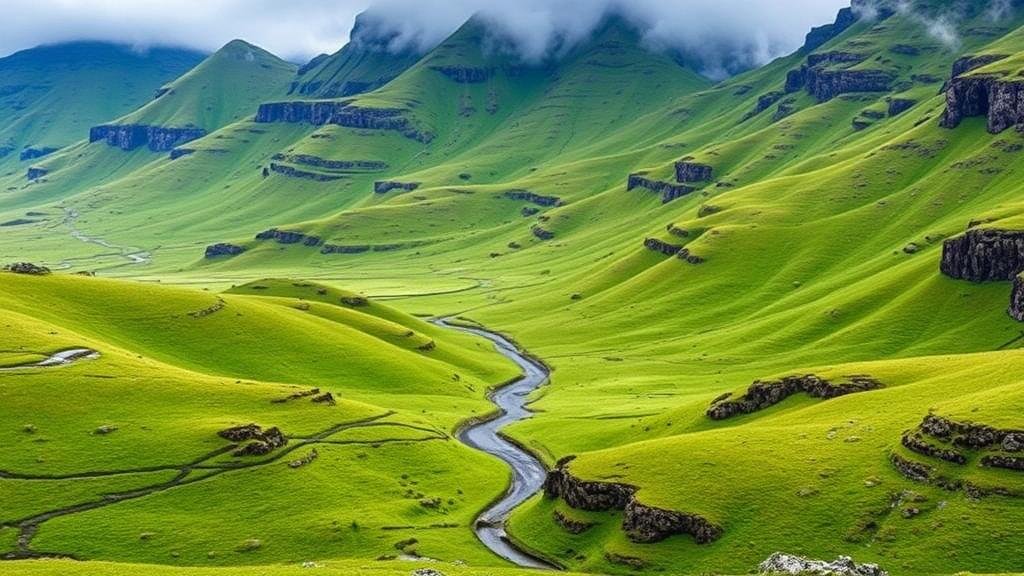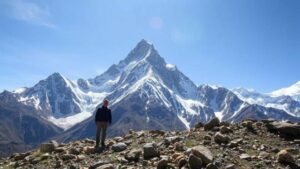Documenting the lush green valleys of the Faroe Islands’ untouched landscapes.
Documenting the Lush Green Valleys of the Faroe Islands’ Untouched Landscapes
The Faroe Islands, a remote archipelago located between the Atlantic Ocean and the North Sea, offers a breathtaking panorama of lush valleys, steep cliffs, and dramatic coastlines. This collection of 18 islands, part of the Kingdom of Denmark, is known for its rugged beauty and rich cultural heritage. With a population of approximately 52,000 inhabitants, the scenic landscapes of the Faroe Islands remain largely untouched, making them a prime location for documenting nature’s splendor.
A Brief Overview of the Faroe Islands
The islands were settled by Norsemen in the late 9th century and have since developed a unique culture influenced by Norse and Celtic traditions. Existing in a subpolar oceanic climate, the Faroe Islands experience cool summers and mild winters, which contribute to their vibrant green landscapes. Key geographical features include:
- Approximately 1,399 square kilometers of land area
- An average elevation of 300 meters above sea level
- Cliffs that rise up to 1,000 meters in some locations
The Beauty of the Lush Green Valleys
The lush green valleys of the Faroe Islands present an idyllic tapestry of rolling hills and fertile lands. One of the most renowned valleys is the Fossá Valley, home to the highest waterfall in the Faroe Islands. valley’s soft slopes and vibrant greenery contrast sharply with its jagged cliffs, showcasing a stunning natural landscape.
Another remarkable valley is SkálavÃk Valley, featuring rich pastures that support sheep farming. The picturesque village of SkálavÃk, nestled in this valley, provides a glimpse into the harmonious balance between nature and traditional Faroese agriculture.
Unique Flora and Fauna
The untouched landscapes of the Faroe Islands are not only visually appealing but also support a diverse range of flora and fauna. The mild climate and abundant rainfall foster the growth of lush vegetation, including:
- Wildflowers such as orchids and buttercups
- Soft mosses and vibrant green grass
This biodiversity also attracts a variety of bird species, making the islands a hotspot for birdwatching. Notably, the regions around the valleys are home to puffins, guillemots, and various seabirds, which thrive along the steep cliffs and coastal areas.
Documenting the Valleys: The Role of Photography and Environmental Studies
With over 90% of the Faroe Islands being uninhabited, documenting these valleys is vital for environmental research and conservation efforts. Photographers and environmentalists alike are drawn to the islands, where they capture the serene beauty and inform the public about the ecological significance of this region.
For example, projects like the Faroe Islands Nature Explorer aim to encourage sustainable tourism while promoting awareness of the islands’ unique ecosystems. These documentation efforts are essential for preserving the natural landscapes and advocating for conservation strategies.
Challenges in Conservation
Despite the untouched beauty, the Faroe Islands face several environmental challenges, including climate change and the impacts of tourism. Increased foot traffic in these pristine areas can lead to soil erosion and disturbance of local wildlife. Stakeholders must focus on sustainable tourism practices that prioritize conservation to protect these lush valleys for future generations.
Real-World Applications of Documentation
Documenting the lush landscapes of the Faroe Islands serves multiple purposes, including:
- Informing governmental policies regarding conservation
- Creating educational resources for schools and environmental organizations
- Encouraging eco-friendly tourism practices
Through photography and research, individuals and organizations can advocate for the protection of these beautiful yet fragile ecosystems, ensuring they remain preserved amid the challenges of modernization and environmental change.
Actionable Takeaways
Whether you are a nature enthusiast, photographer, or environmental advocate, there are ways to engage with the untouched landscapes of the Faroe Islands:
- Participate in guided eco-tours that respect local ecology
- Engage with local conservation initiatives and support sustainable practices
- Document and share your experiences and observations to raise awareness
To wrap up, the lush green valleys of the Faroe Islands are not only a testament to natural beauty but also a vital part of the islands’ ecological integrity. By committing to thorough documentation, we can contribute to preserving these breathtaking landscapes for generations to come.


